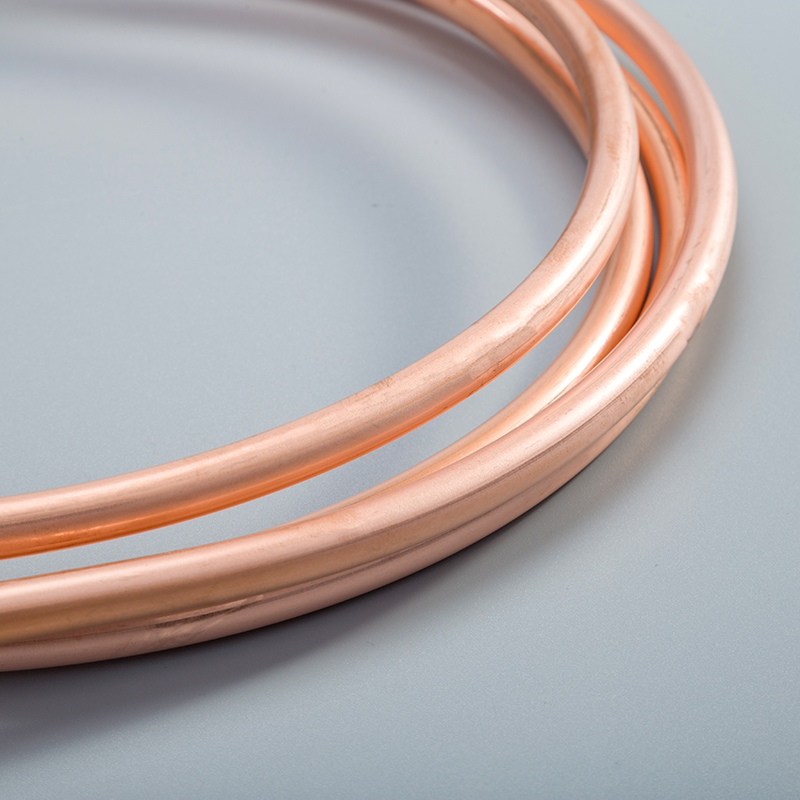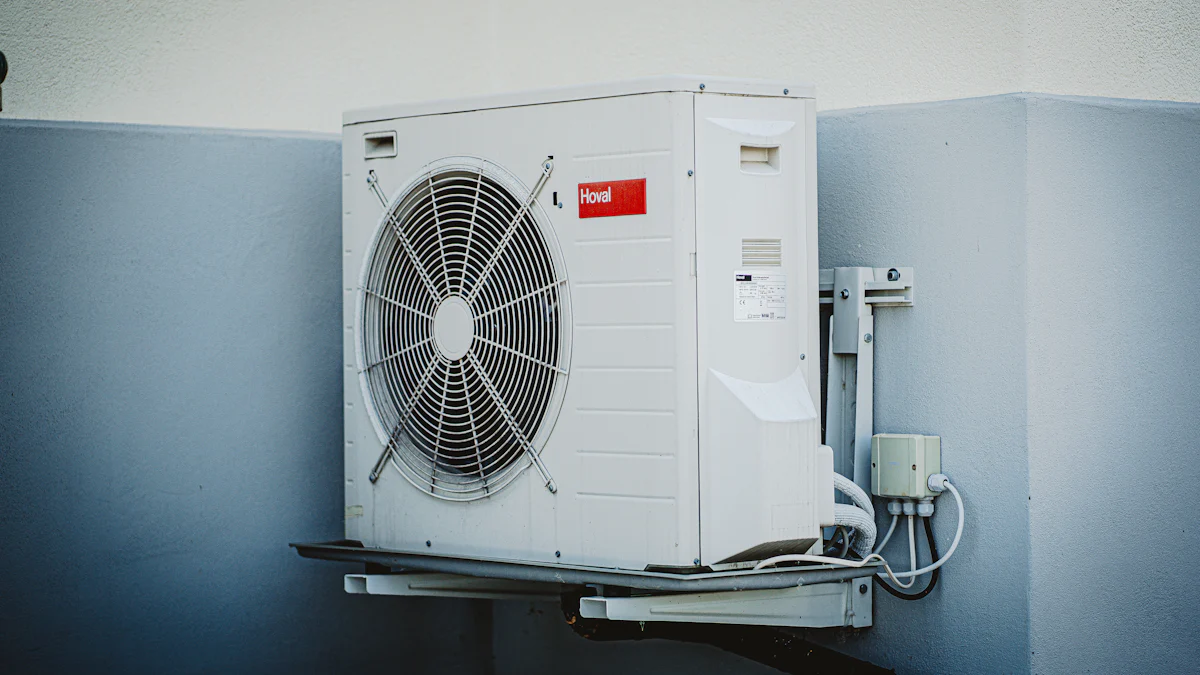Effective Methods to Insulate AC Copper Pipes

Write a 'Benefits' blog post on 'Benefits of insulating air conditioner copper pipes'
Insulating AC copper pipes is crucial for benefits like enhancing energy efficiency, preventing condensation issues, and extending the system's lifespan. Proper insulation not only reduces heat loss by up to 15% but also increases energy savings by up to 5%. Additionally, it plays a vital role in maintaining the cooling function's effectiveness. Without adequate insulation, common issues such as heat loss in winter, overheating in summer, and condensation problems can arise, impacting the overall performance of the air conditioning system.
Understanding the Basics of AC Copper Pipe Insulation
What is AC Copper Pipe Insulation?
Insulating AC copper pipes involves wrapping them with a protective layer to enhance their performance and efficiency. This method aims to reduce heat loss, prevent condensation issues, and extend the lifespan of the entire air conditioning system.
Definition and purpose
The insulation of AC copper pipes serves as a barrier that minimizes heat transfer between the pipes and their surroundings. By adding this layer, it helps maintain the desired temperature within the system, ensuring optimal cooling efficiency.
Types of insulation materials
Foam Insulation: A popular choice for insulating aircon pipes due to its excellent thermal properties and flexibility. It offers moisture resistance and is easy to install around pipes of various shapes and sizes.
Standard Aircon Insulator: Consists of thick black foam wires that act as a protective layer for copper pipes. These wires absorb condense water formations along the pipe, reducing the risk of leakages from the unit.
Class O Insulation: A flexible, closed-cell elastomeric rubber insulation that effectively prevents energy loss and condensation issues. It is versatile and available in various formats for different applications.
Why Insulate AC Copper Pipes?
Insulating AC copper pipes provides numerous benefits that contribute to the overall efficiency and longevity of the system.
Energy efficiency
Properly insulated copper pipes help minimize heat loss during operation, leading to increased energy savings. By reducing unnecessary energy consumption, insulation plays a crucial role in maintaining an environmentally friendly approach to cooling systems.
Preventing condensation and freezing
Insulation acts as a protective barrier against external temperature changes, preventing condensation buildup on the copper pipes. This protection ensures that no freezing occurs within the system, avoiding potential damage or malfunctions.
Extending the lifespan of the AC system
By insulating AC copper pipes, you create a shield that safeguards them from external elements and temperature fluctuations. This protection not only enhances the system's durability but also reduces maintenance costs over time.
Choosing the Right Insulation Material
Types of Insulation Materials
Foam insulation
Foam insulation is a versatile material known for its excellent thermal properties and flexibility.
It provides effective moisture resistance, making it suitable for various pipe shapes and sizes.
Foam insulation offers a protective layer that helps in maintaining optimal temperatures within the system.
Rubber insulation
Rubber insulation is a durable option that effectively prevents energy loss and condensation issues.
It is flexible and available in different formats to cater to specific application needs.
This type of insulation contributes significantly to enhancing the efficiency of the air conditioning system.
Fiberglass insulation
Fiberglass insulation is recognized for its affordability and thermal resistance properties.
It is commonly used in residential and commercial HVAC systems to improve energy efficiency.
The installation of fiberglass insulation aids in reducing heat transfer, ensuring better cooling performance.
Factors to Consider
Climate and environmental conditions
When selecting an insulation material, consider the climate and environmental conditions where the air conditioning system operates.
Different materials offer varying levels of resistance to temperature changes, moisture, and external elements.
Cost and budget
Cost plays a crucial role in choosing the right insulation material for AC copper pipes.
Evaluate your budget constraints alongside the long-term benefits of each type of insulation to make an informed decision.
Ease of installation
The ease of installation is an essential factor to streamline the insulating process efficiently.
Select an insulation material that aligns with your skill level or seek professional assistance for proper installation techniques.
Step-by-Step Guide to Insulating AC Copper Pipes

Preparation
Insulating AC copper pipes requires a systematic approach to ensure optimal efficiency and performance. Before starting the insulation process, it is essential to gather the necessary tools and materials. These may include foam insulation, rubber insulation, cutting tools, tape, and safety gear. Safety precautions should also be taken seriously to prevent any accidents during the installation.
Gathering necessary tools and materials
Foam insulation: A key component in insulating AC copper pipes effectively.
Rubber insulation: Provides durability and prevents energy loss.
Cutting tools: Essential for accurately sizing the insulation material.
Tape: Used for securing the insulation in place.
Safety gear: Includes gloves and goggles to protect against sharp edges or debris.
Safety precautions
Wear appropriate safety gear before handling any tools or materials.
Ensure the work area is well-lit and ventilated for a comfortable working environment.
Keep sharp objects away from reach and handle cutting tools with care to avoid injuries.
Measuring and Cutting the Insulation
To insulate AC copper pipes efficiently, precise measurements are crucial. Accurate measurement techniques ensure that the insulation fits snugly around the pipes without leaving gaps or overlaps. Once you have measured the required length, cutting the insulation to fit becomes the next step in preparing for installation.
Accurate measurement techniques
Use a measuring tape to determine the exact length of each section of copper pipe.
Mark the measurements clearly on the insulation material before cutting.
Double-check measurements to avoid errors that could impact the effectiveness of the insulation.
Cutting the insulation to fit
Utilize sharp cutting tools such as utility knives or scissors for clean cuts.
Follow the marked measurements carefully to ensure each piece fits perfectly around the pipes.
Trim any excess material neatly to maintain a uniform appearance along the entire length of the pipe.
Installing the Insulation
With proper preparation and accurate measurements in place, installing AC copper pipe insulation can now be carried out smoothly. This step involves wrapping the pipes with insulated material securely and ensuring that it is firmly secured in place using tape or adhesive.
Wrapping the pipes
Start at one end of the pipe and wrap the insulation around it in a spiral motion.
Ensure there are no gaps or exposed areas where heat transfer could occur.
Overlap each layer slightly to create a tight seal along the entire length of piping.
Securing the insulation with tape or adhesive
Use high-quality tape designed for HVAC applications to secure loose ends or seams.
Wrap tape around any joints or connections between sections of insulated pipe.
Apply adhesive at key points along complex bends or corners for added reinforcement.
Inspecting and Maintaining the Insulation
Regular inspection for wear and tear
Conduct routine inspections on the insulated AC copper pipes to check for any signs of wear or damage.
Look for indications of peeling, cracks, or gaps in the insulation that may compromise its effectiveness.
Ensure that the insulation is intact and properly secured along the entire length of the copper pipes.
Tips for maintenance and replacement
Implement a regular maintenance schedule to upkeep the condition of the AC copper pipe insulation.
Clean the pipes before inspection to remove any dirt or debris that could impact the insulation's performance.
Consider replacing damaged or worn-out insulation promptly to maintain optimal efficiency.
Follow manufacturer guidelines for proper maintenance practices to prolong the lifespan of the insulation.
Common Mistakes to Avoid
Incorrect Measurement
Consequences of poor measurement
Inaccurate measurements can lead to ill-fitting insulation, causing heat loss and inefficiency in the air conditioning system.
Poorly measured insulation may result in gaps or overlaps, compromising the protective barrier around the copper pipes.
Regularly scheduled maintenance checks can help identify any issues stemming from incorrect measurements and prevent further energy losses.
How to measure correctly
Begin by using a measuring tape to determine the precise length needed for insulating the AC copper pipes.
Mark the measurements clearly on the insulation material before cutting it to ensure a proper fit.
Double-check all measurements to guarantee that the insulation wraps snugly around the pipes without leaving any exposed areas.
Following correct measurement techniques is essential for maximizing energy efficiency and preventing potential damage due to poor insulation.
Using the Wrong Material
Impact of inappropriate materials
Choosing unsuitable insulation materials can result in reduced energy savings and compromised cooling efficiency.
Inadequate materials may not provide sufficient protection against condensation, leading to potential water damage within the system.
Opting for high-quality insulation materials tailored to specific needs ensures optimal performance and longevity of the air conditioning unit.
Choosing the right material for specific needs
Evaluate environmental factors such as temperature fluctuations and humidity levels when selecting insulation materials for AC copper pipes.
Consider closed-cell foam insulation for its superior thermal properties and moisture resistance, ideal for maintaining efficient cooling operations.
Polyethylene foam stands out as a cost-effective option known for its ease of installation and durability, making it suitable for various HVAC applications.
Prioritize selecting appropriate materials based on your system's requirements to enhance overall performance while minimizing energy consumption.
Poor Installation Techniques
Common installation errors
Improperly securing insulation around AC copper pipes can lead to air leaks, reducing energy efficiency and increasing operational costs.
Neglecting to seal gaps or seams in the insulation allows heat transfer, resulting in temperature inconsistencies within the air conditioning system.
Regular maintenance checks should include inspecting installation quality to address any errors promptly and maintain peak system performance.
Best practices for effective installation
Start by cleaning AC copper pipes thoroughly before installing insulation to ensure optimal adhesion and longevity of the protective layer.
Wrap foam pipe insulation securely around each section of copper piping, overlapping layers neatly without leaving gaps or exposed areas.
Seal joints with foil-faced tape or adhesive designed for HVAC applications to reinforce insulation effectiveness and prevent air leakage.
Implement routine inspections post-installation to verify proper coverage and address any installation issues promptly, enhancing overall system efficiency.
Testimonials:
Staff Writer
"Aside from installing high-quality insulation, you will need to regularly schedule aircon maintenance and repair checks to keep your aircon unit in tip-top shape."
Insulating AC copper pipes is vital for air conditioning systems to enhance efficiency and longevity. By reducing heat transfer, protecting components, and absorbing vibrations, proper insulation ensures improved indoor comfort and energy savings. Investing in quality aircon pipe insulation not only reduces maintenance issues but also safeguards the system from damage. Remember, following best practices in HVAC insulation selection and installation leads to cost-effectiveness and optimal performance. Make informed choices to benefit from a well-insulated air conditioning setup.
See Also
Unveiling the Key to Enhancing AC Efficiency with Copper
Exploring the Perfect Insulation for Copper Tubing
The Benefits of Opting for Copper Tubing in AC


